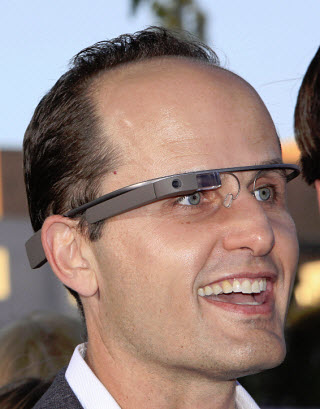A new company aims to transform video games into real-world experiences.
Semblance Augmented Reality is a company created by Mark Skwarek and the goal of the company is to free video games from a mere television experience and turn them into one that is physical, where a person can interact with an entire world of virtual characters, structures and objects in a real environment.
So far, Skwarek has managed to raise more than $30,000 in crowdfunding to launch Semblance.
Having raised over $30 thousand on Kickstarter, the group fundraising site, Skwarek is gearing up to release the first Semblance AR app for Android and iOS mobile phones. He recently demonstrated how the app works in New York City wearing Epson Moverio B200 glasses.
Although augmented reality (AR) is not a new concept, nor is the idea of combining AR with gaming, it is starting to become more mainstream due to an increase in popularity of wearable devices, such as smart glasses, smartwatches and fitness trackers. Furthermore, today, there is a wide range of mobile devices that are finally equipped with GPS tracking, camera technology and sensors that are strong enough to handle AR tech.
 While AR tech can certainly improve upon a video gamer’s experience, use for this technology is also being explored in other areas where combining augmented reality with wearables could help solve practical problems hands-free. It is even showing promising results in the health sector.
While AR tech can certainly improve upon a video gamer’s experience, use for this technology is also being explored in other areas where combining augmented reality with wearables could help solve practical problems hands-free. It is even showing promising results in the health sector.
According to Brian Ballard, CEO and founder of APX Labs, an AR software company, wearables will help empower deskless employees in the same way that mobile devices and computers have done for office workers. Wearable gadgets, like smart glasses, can provide workers with immediate access to information in real-time no matter where they are.
Augmented reality technology is not without its challenges.
According to Benjamin Arnold, a consumer tech analyst at the NPD Group, “The technology is here right now. It’s just implementing them in a product, showing consumers that it has a value and can do things better than they were doing before.”
However, one of the problems this tech faces is that internet connectivity and battery life of devices needs to be improved in order to make it efficient. However, Ballard believes that it will not be long before it becomes fully integrated into people’s lives. This may be particularly true for video gamers due to the success of augmented reality gaming apps like Skwarek’s.

 It is a hot debate among psychiatrists whether internet addiction disorder is connected to conventional devices, such as personal computers and smartphones. Many researchers believe to this day that the effects of the disorder are only symptoms of other psychological problems. In fact, in the 2013 update to the Diagnostic and Statistical Manual of Mental Disorders, it was not included as a clinical diagnosis.
It is a hot debate among psychiatrists whether internet addiction disorder is connected to conventional devices, such as personal computers and smartphones. Many researchers believe to this day that the effects of the disorder are only symptoms of other psychological problems. In fact, in the 2013 update to the Diagnostic and Statistical Manual of Mental Disorders, it was not included as a clinical diagnosis.